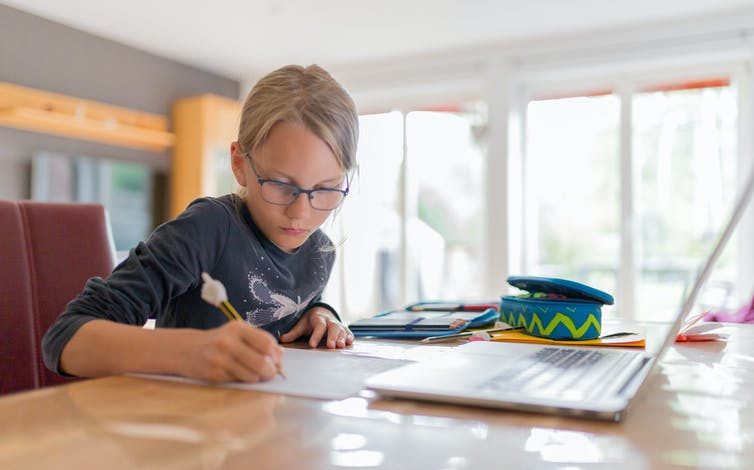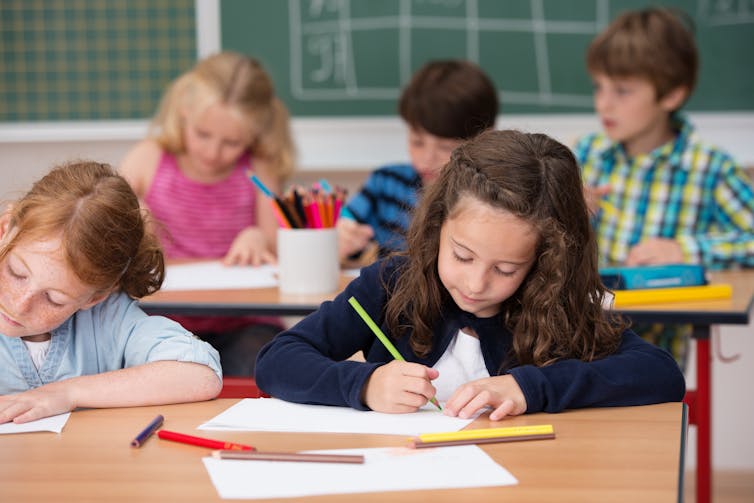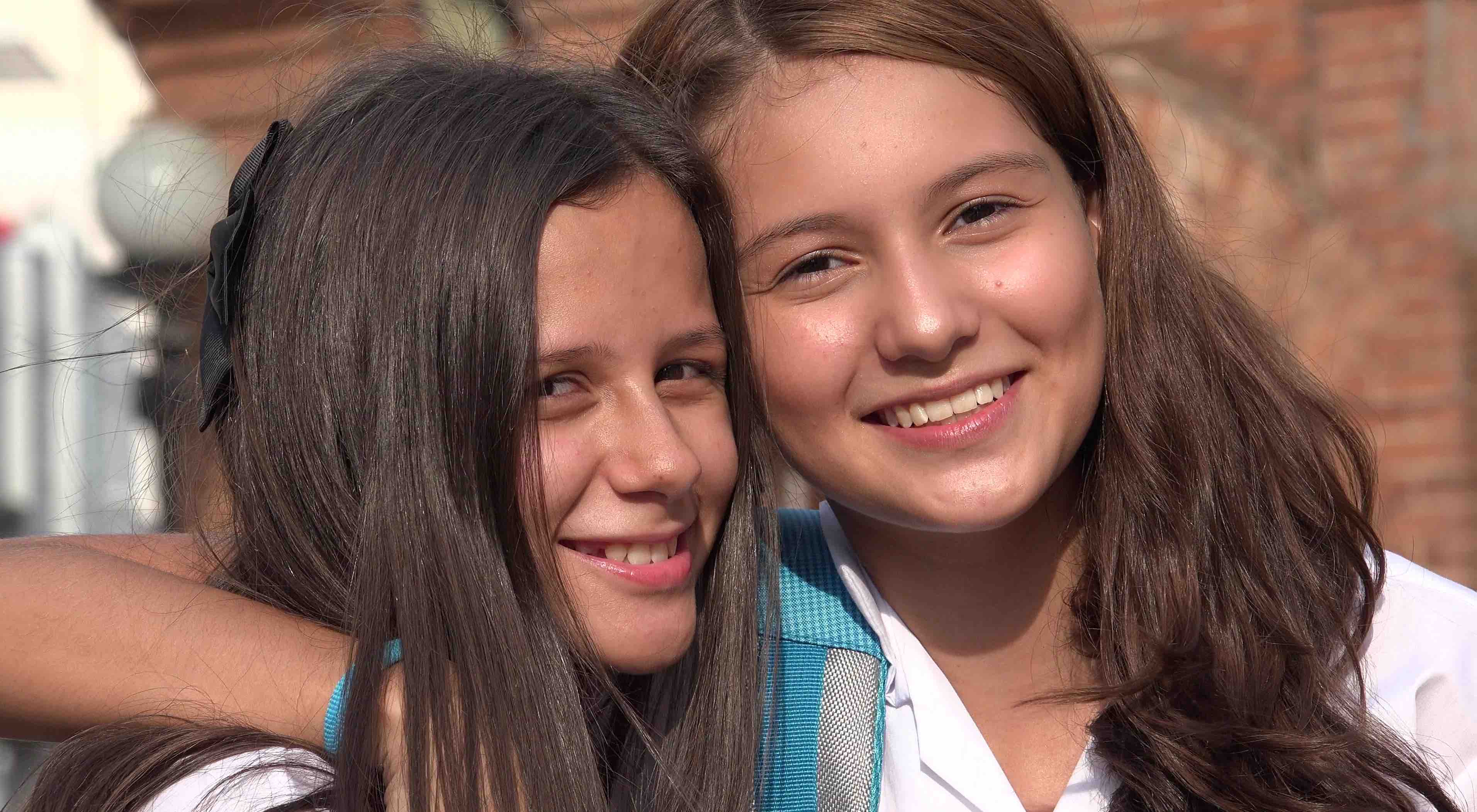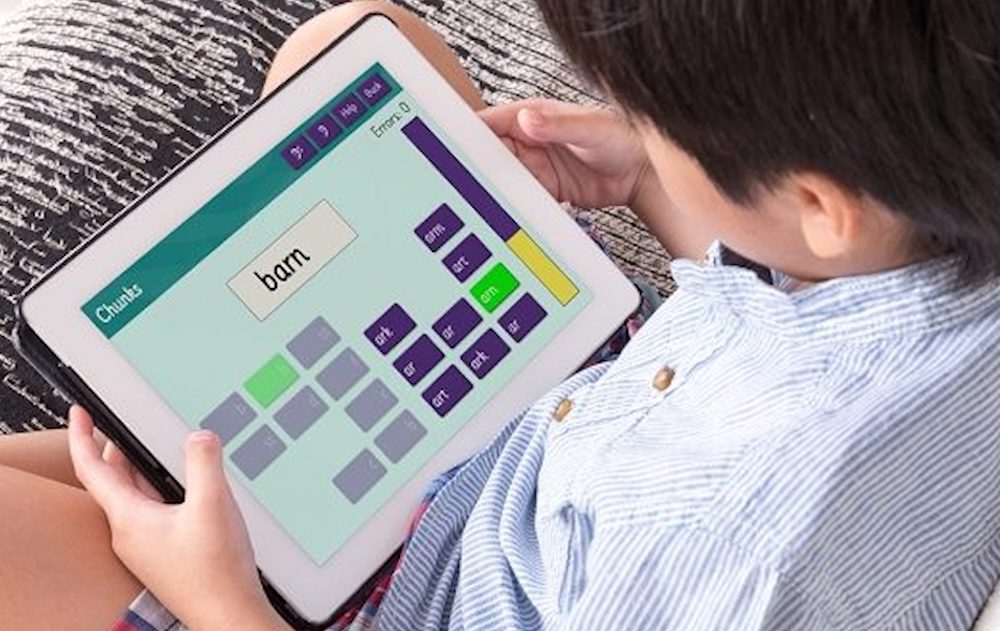Remote learning didn’t affect most NSW primary students in our study academically. But well-being suffered

There have been some reports students fell behind during the remote learning period in 2020.
For instance, a report by the NSW education department found NSW students in year 3 were up to four months behind in reading in 2020 compared to their 2019 counterparts. And year 9 students were two to three months behind in numeracy.
Modelling by the Grattan Institute estimated disadvantaged students — including those from low socioeconomic families, Indigenous backgrounds and remote communities — had lost around two months’ learning during the remote learning period in Victoria.
Our research found only year 3 students from the least advantaged schools fell behind academically during the remote learning period.
But there was no difference in learning progress between 2020 and the year before in all the other year 3 and 4 students in our sample.
We were able to compare 2019 and 2020
We collected data on student achievement in NSW government primary schools during terms 1 and 4 in 2019 and during term 1 in 2020.
Students in year 3 and 4 in 2019 sat progressive achievement tests in maths and reading in term 1 in 2019, and then again in term 4, to see how they had progressed over the year.
We then had year 3 and 4 students sit the same test in term 1 of 2020. But then COVID struck.
So we approached the NSW education department about funding collection of the term 4 data in 2020. We wanted to see if the interruption to normal schooling during the year had affected average student progress from term 1 to term 4.
We were uniquely positioned to compare the annual growth in student achievement in 2020 (where the year was interrupted) with our results from 2019.
Students in years 3 and 4 in 2020 took the same tests as we gave students in 2019. The total of 3,030 students across both years, from 97 schools, allowed us to examine the actual effects of the eight-to-ten week system-wide disruption to schooling in NSW caused by the pandemic.

We made sure to compare the results of students who attended schools with a similar Index of Community Socio-Educational Advantage (ICSEA). This score takes into account factors such as socioeconomic advantage and whether schools are in a rural area, as well as the proportion of Indigenous students in the school.
We also made sure to compare students with similar baseline test results.
Here’s what we found
We found no significant differences, on average, between the 2019 control group and 2020 cohort in student growth in maths or reading.
However, there were some differences when it came to particular groups of students.
Specifically, we looked at the effects for Indigenous students, students in different locations and from different socioeconomic levels (using their school ICSEA).
The average school ICSEA in Australia is 1,000. Schools in our sample ranged from less than 900 to greater than 1,100.
When it came to maths, our results showed:
-
year 3 students from less advantaged schools (ICSEA less than 950) showed two months less academic progress in 2020, compared with the students in the 2019 group
-
year 3 students in mid-range schools (ICSEA 950 – 1050) actually showed two months’ additional progress
-
years 3 students showed no significant difference in the more advantaged schools (ICSEA greater than 1,050)
-
year 4 students showed no significant difference in progress regardless of school ICSEA.
When it came to reading, we found no significant differences in academic progress between 2019 and 2020, regardless of school ICSEA.
We saw no significant differences in progress in both maths and reading for Indigenous students or those in regional locations. But the smaller sample of students in these groups means these results should be interpreted with caution.
What this means
Our study provides a counter-narrative to widespread concern about how much students fell behind during the remote learning period.
Indeed, the results are cause for celebration. Most students are, academically, where they are expected to be.
However, the lower achievement growth in maths for year 3 students in lower ICSEA schools must be addressed as a matter of urgency to avoid further inequities.
Student well-being did suffer
We also interviewed 18 teachers and principals, asking them about things like student progress and well-being during the remote learning period. These interviews echo concerns raised by others about the well-being of both students and teachers.
They described the learning from home period as one of significant stress, anxiety and frustration in many families.
They also expressed concern about student well-being, even after the return to face-to-face schooling.
Supporting student mental health substantially increased the workload of school counsellors, where available, and of teachers and principals in addressing student behaviour.
One principal said:
We’ve got massive amounts of anxiety in our students. From physical behaviour, oppositional behaviours, kids not wanting to come to school. They’re melting down at school … I’m only a primary school, so I have no idea how the high schools are handling it.
They told us the exponential increase in workload during 2020 has taken its toll on teachers, including a significant drop in morale. Teachers and principals described the pressure of supporting remote learning, regardless of students’ access to the internet or a computer, combined with teaching children of essential workers who remained at school.
Their work also included developing and delivering online lessons and providing various forms of support to parents. When schools reopened, staff worked to support student well-being and reestablish relationships with their classes. They did this without the support of parent volunteers or the balance that comes from non-classroom activities like school assemblies and excursions that typically punctuate life in schools.
Our research highlights a need to provide ongoing support to all teachers and students to ensure their well-being as the 2021 school year commences. Let’s start with expressing immense gratitude to teachers for ensuring student learning despite the unprecedented circumstances of 2020.![]()







